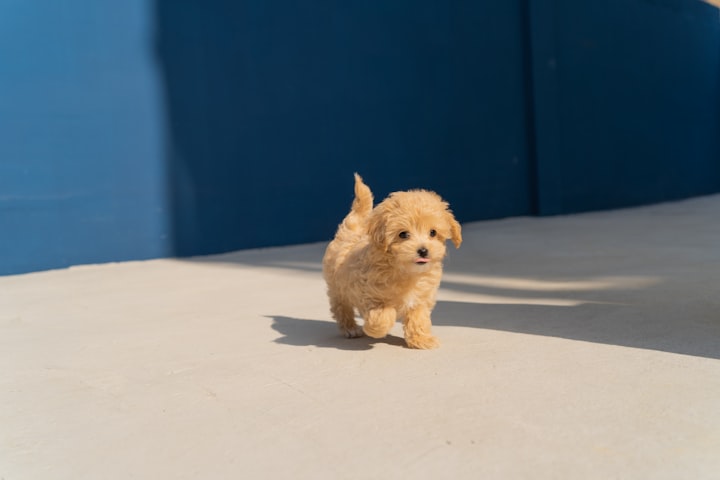The Best Way to Train Your Puppy
Bringing home a new puppy is an exciting and joyful experience. However, raising a well-behaved and obedient companion requires proper training. Puppy training not only teaches them essential skills and commands but also strengthens the bond between you and your furry friend. In this article, we will explore the best practices and techniques for training your puppy effectively.
Start Early: Training should begin as soon as you bring your puppy home. Puppies are most receptive to learning between the ages of 8 to 16 weeks. Use this critical period to introduce them to their new environment and establish a foundation for future training. Begin with basic commands such as sit, stay, and come.
Positive Reinforcement: Positive reinforcement is widely regarded as the most effective training method for puppies. Rewarding desired behaviors with treats, praise, and affection encourages them to repeat those behaviors. Consistency is key; provide immediate rewards and use a clear, upbeat tone to reinforce positive actions. Avoid punishment or physical force, as it can lead to fear or aggression.
Crate Training: Crate training provides a safe and comfortable space for your puppy while also aiding in potty training. Introduce the crate gradually, making it a positive experience by placing treats and toys inside. Never use the crate as a form of punishment. With patience and consistency, your puppy will learn to see the crate as their den and will willingly enter it.
Socialization: Proper socialization is crucial for a well-rounded and friendly adult dog. Introduce your puppy to various environments, people, and other animals at an early age. Organize playdates with well-vaccinated and friendly dogs. Expose them to different sounds, sights, and experiences to help them adapt to new situations confidently.
Consistency and Repetition: Consistency is vital in training your puppy. Use the same commands and gestures consistently, ensuring that all family members follow the same rules. Establish a routine for feeding, playtime, and bathroom breaks. Repetition helps reinforce learning and solidifies desired behaviors.
Leash Training:Teaching your puppy to walk politely on a leash is essential for their safety and your peace of mind. Begin by allowing your puppy to become comfortable wearing a collar and leash indoors. Then, gradually transition to outdoor walks, rewarding them for walking calmly beside you. Be patient, as leash training takes time and practice.
Obedience Classes:Enrolling your puppy in obedience classes can be highly beneficial. These classes provide professional guidance, structured training, and opportunities for socialization with other puppies. Trainers can address specific challenges and offer tailored advice for your puppy's needs.
Patience and Persistence: Remember that training takes time and patience. Puppies have short attention spans, so keep training sessions short and frequent. End each session on a positive note and avoid becoming frustrated or losing your temper. Stay persistent and celebrate small victories along the way.
Be Mindful of Age and Developmental Stages: It's crucial to consider your puppy's age and developmental stages when training them. Younger puppies have shorter attention spans and may not be able to grasp complex commands initially. Focus on basic obedience skills and gradually increase the difficulty as your puppy grows older and more mature. Adjust your training techniques to suit their age and abilities.
Use Clicker Training: Clicker training is a popular technique that involves using a clicker, a small handheld device that makes a distinct clicking sound, to mark desired behaviors. Pair the clicker with treats or rewards, clicking the moment your puppy exhibits the desired behavior, and then offering the reward. This method helps create clear communication and accelerates the learning process.
Supervise and Prevent Unwanted Behaviors: Supervision is crucial, especially during the early stages of training. Keep a close eye on your puppy to prevent them from engaging in unwanted behaviors, such as chewing on furniture or eliminating indoors. Supervision allows you to redirect their attention to appropriate toys or take them outside when they need to relieve themselves.
Use Different Training Methods: Every puppy is unique, and different training methods may work better for one dog than another. Incorporate various techniques, such as clicker training, positive reinforcement, and luring, to find what works best for your puppy. Some puppies may respond better to food rewards, while others may be more motivated by playtime or praise. Adapt your training approach to suit your puppy's personality and preferences.
Focus on Basic Commands: Teaching your puppy basic commands is fundamental to their training. Start with simple commands like "sit," "stay," "down," and "come." These commands establish a foundation for more advanced training and ensure your puppy's safety in various situations. Consistently reinforce these commands through positive reinforcement and practice them in different environments to improve your puppy's obedience skills.
Address Undesirable Behaviors with Redirecting: Puppies may exhibit undesirable behaviors, such as jumping up on people or nipping. Instead of scolding or punishing them, redirect their attention to an appropriate behavior. For example, if your puppy jumps up, ask them to sit and reward them for complying. Redirecting helps teach your puppy what behaviors are acceptable while avoiding negative associations.
Seek Professional Help When Needed: If you encounter difficulties or specific behavioral issues during your puppy's training, don't hesitate to seek professional help. Trained dog behaviorists or certified dog trainers can provide valuable guidance and address specific challenges you may be facing. They can develop personalized training plans tailored to your puppy's needs, ensuring effective and efficient progress.
Conclusion: Training your puppy is an essential investment in their future and the bond you share. By starting early, using positive reinforcement, socializing effectively, and maintaining consistency, you can lay a solid foundation for their development. Remember to be patient, persistent, and adapt your training methods to suit your puppy's individual needs. With love, guidance, and the right techniques, you can raise a well-behaved and happy companion for years to come.
Click here: Puppy Training Basics Book







Comments
There are no comments for this story
Be the first to respond and start the conversation.